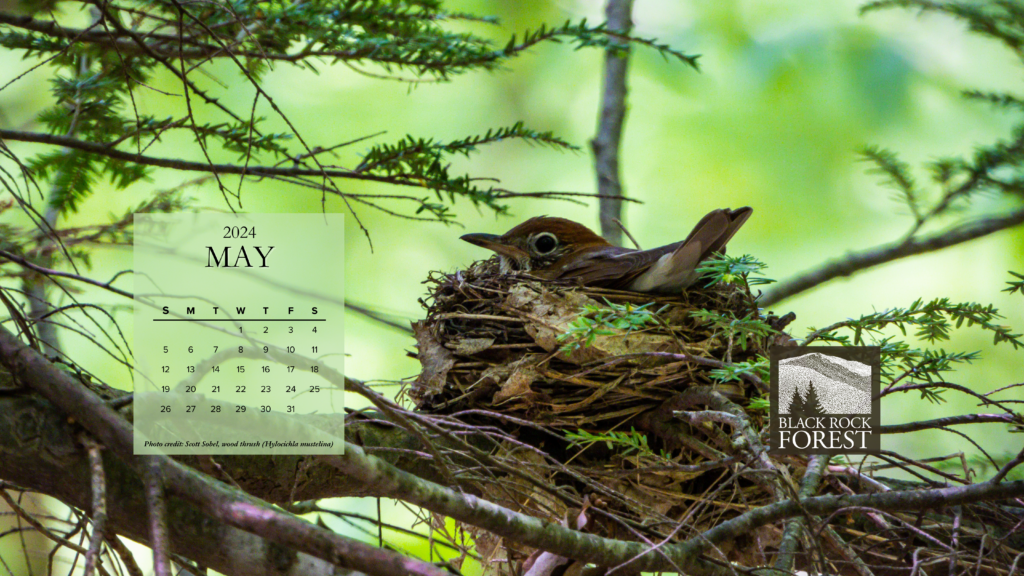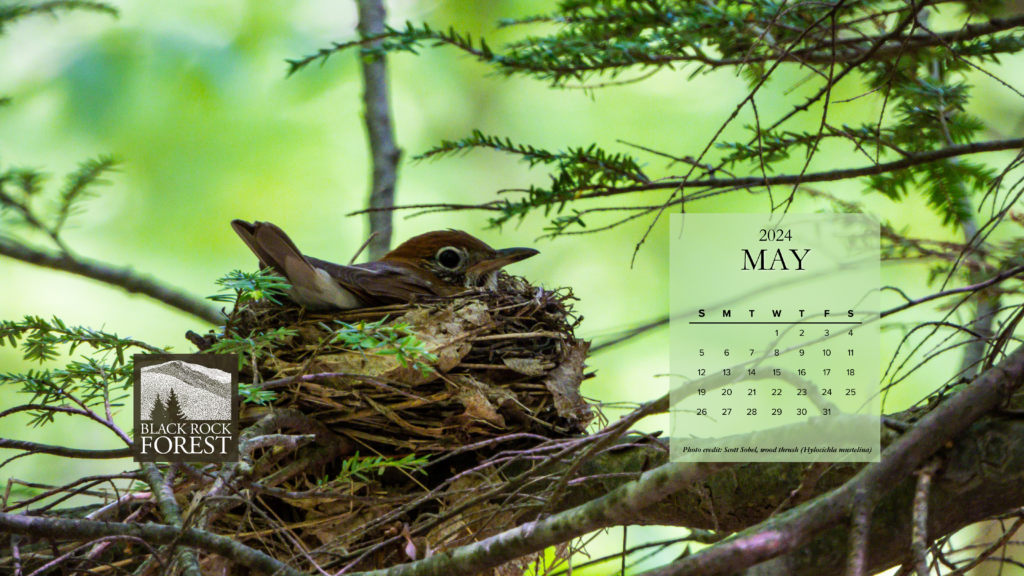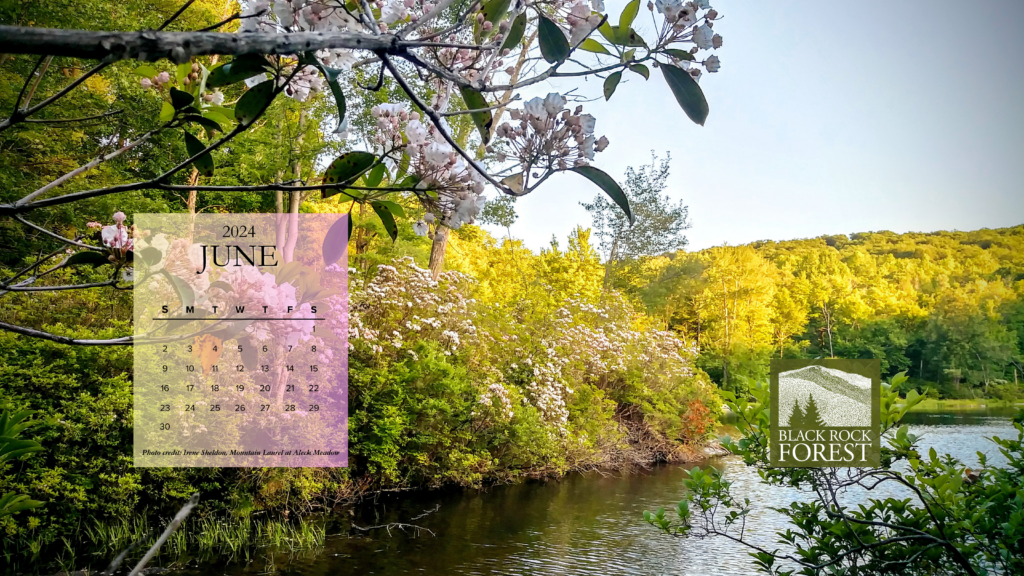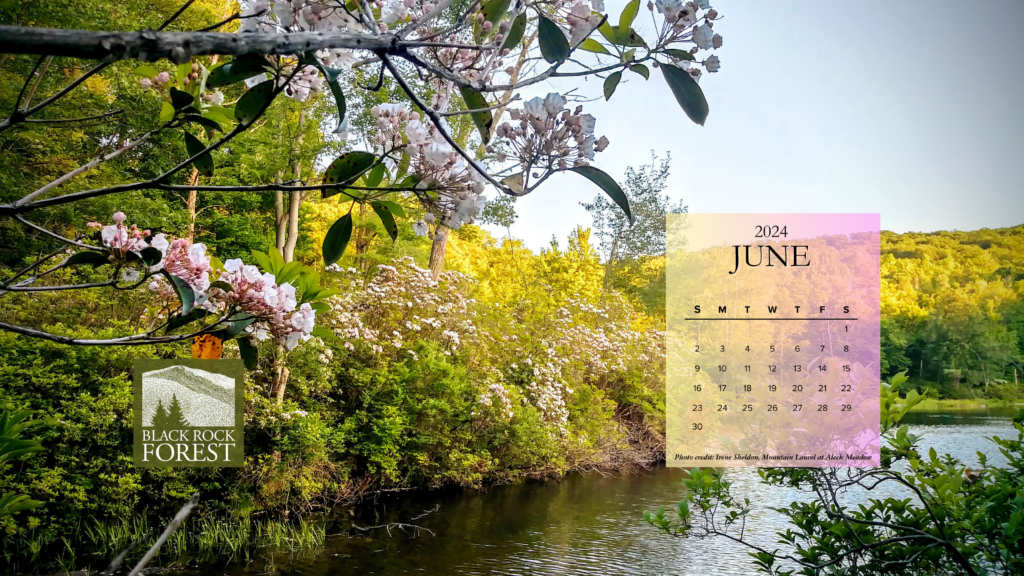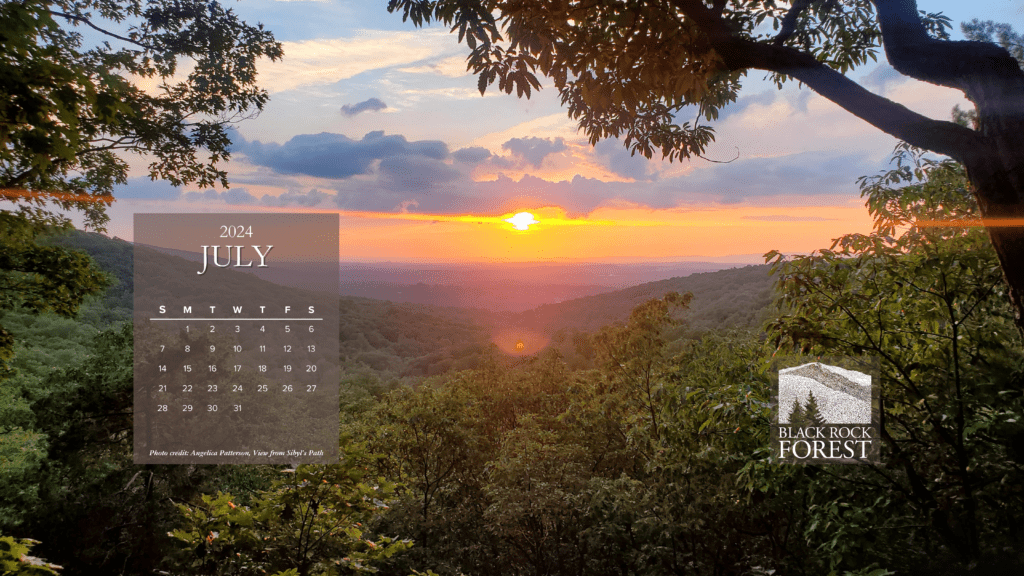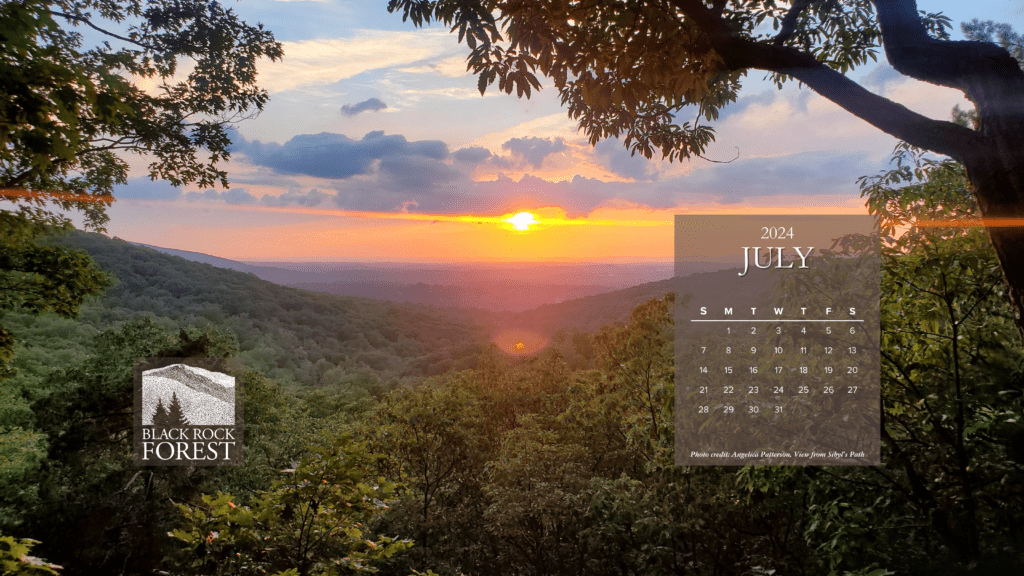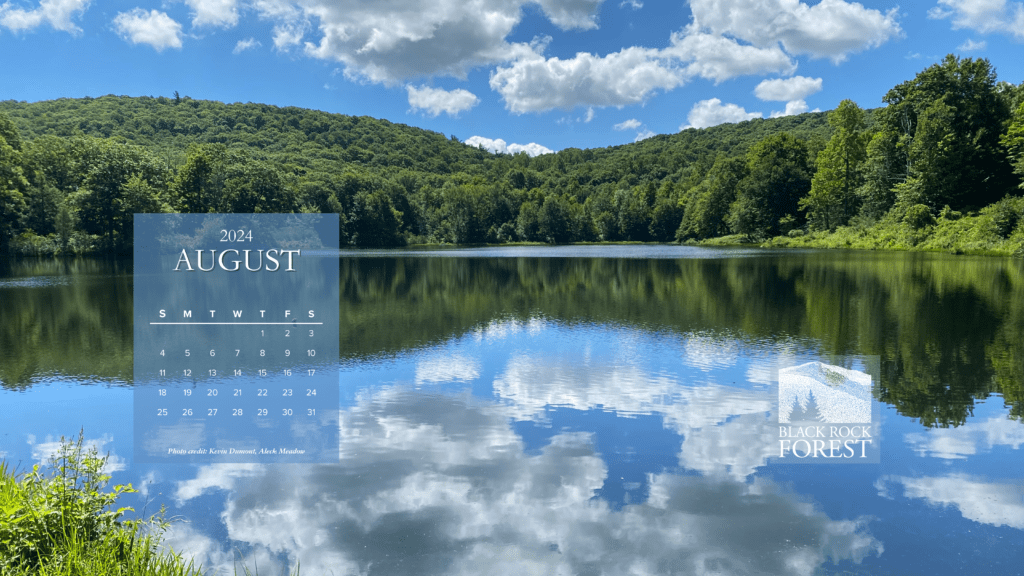Chickadees & Memory: Research at Black Rock Forest
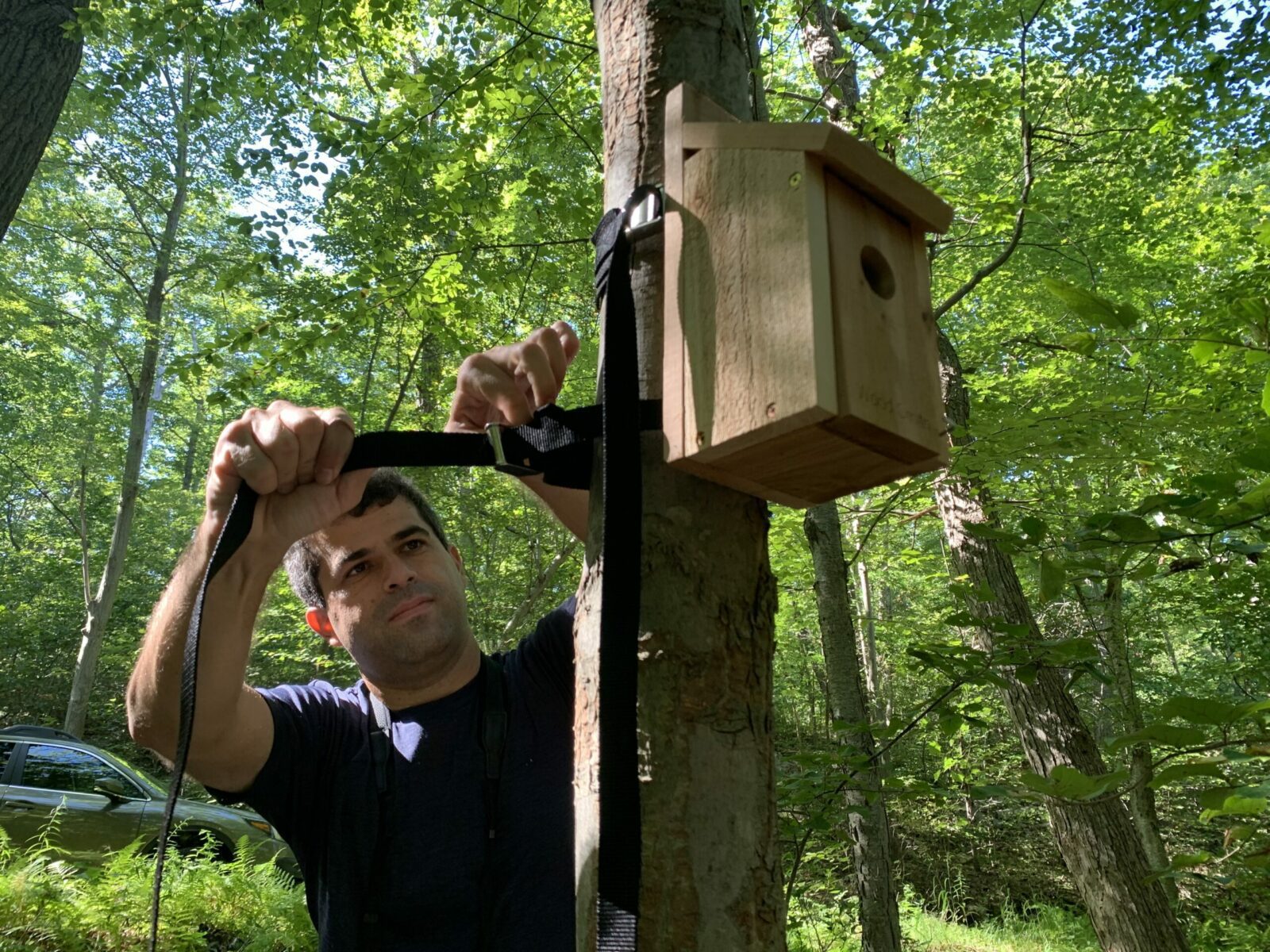
It’s a crisp February morning in Black Rock Forest. Knee-deep in fresh powder and weighed down by bags of birdseed, we trek up to a tidy sunlit grove that overlooks a frozen lake. We had escaped the bustle of Manhattan, driving up here to restock our feeders. It’s a routine day trip, but we are about to witness one of the greatest wonders of the natural world: an animal behavior you can easily miss if you’re not paying attention, but one that we have devoted a good part of the past decade to studying.
“Chicka-dee-dee-dee!” We look up and smile at a familiar greeting. The tiny screaming bird is fluffed up into a perfectly round cotton ball, bracing against the winter breeze. We’ve been fiddling with the feeder far too long, and this chickadee is getting angry. A minute later its patience finally runs out. Swooping low above us, it lands on a different oak tree and clings acrobatically to the underside of a branch. With a deliberate motion, it probes deep into the bark and retrieves a half-eaten sunflower seed. The chickadee had made this cache sometime earlier, and it knew exactly where to look!
On a single winter day, chickadees can hide 5000 food items, scattering their caches throughout the forest. They remember the exact location and the contents of each cache. Thanks to this incredible ability, food-caching birds survive the harshest conditions at a time when most other species flee south for the winter. Chickadees are memory savants. Their hippocampus – the part of the brain that stores memories – grows in size during the winter. It’s so large that it actually bulges up from the surface of the brain!
In our lab at Columbia, we study how memories are encoded in the brain. Chickadees are ideal for answering this question because their behavior is so overt: We know exactly when they form a new memory and when they later recall that memory. We focus on these special moments in time to understand what happens in the brain. Our experimental setups are high-tech chickadee playgrounds, where birds find food, cache, retrieve, and rearrange their caches. We engineer miniature devices to record neural activity during these natural behaviors.
You can also find us in Black Rock Forest in the summer, maintaining and monitoring nest boxes for chickadees (and occasional uninvited House Wrens). We want to understand more about the biology of these birds: what they eat, how they nest, and what they feed their babies. Alongside Black-capped Chickadees, more than 70 species are observed breeding in the forest. We document these observations for the New York Breeding Bird Atlas – a project managed by the Department of Environmental Conservation.
Next time you see a chickadee in the forest, pay close attention. This bird is busily keeping track of its caches. It’s relying on the same brain regions that you use to remember your parked car, or how you met your significant other. Our lab is driven by fascination with these birds, but we hope to learn how all animals, including humans, form and recall lifelong memories.
–Dmitriy Aronov, PhD, Professor of Neuroscience and Stephanie Hale, Research Staff Associate, Zuckerman Mind Brain Behavior Institute at Columbia University
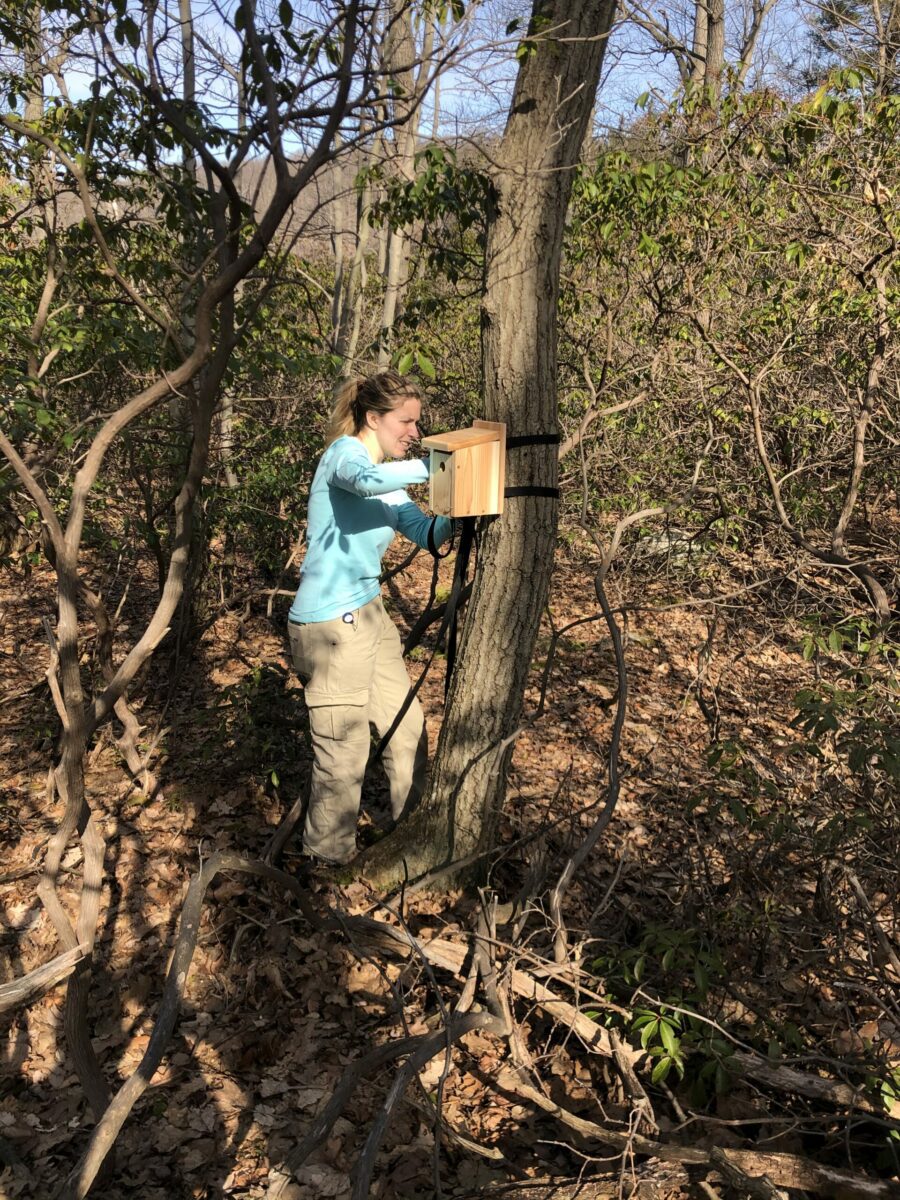
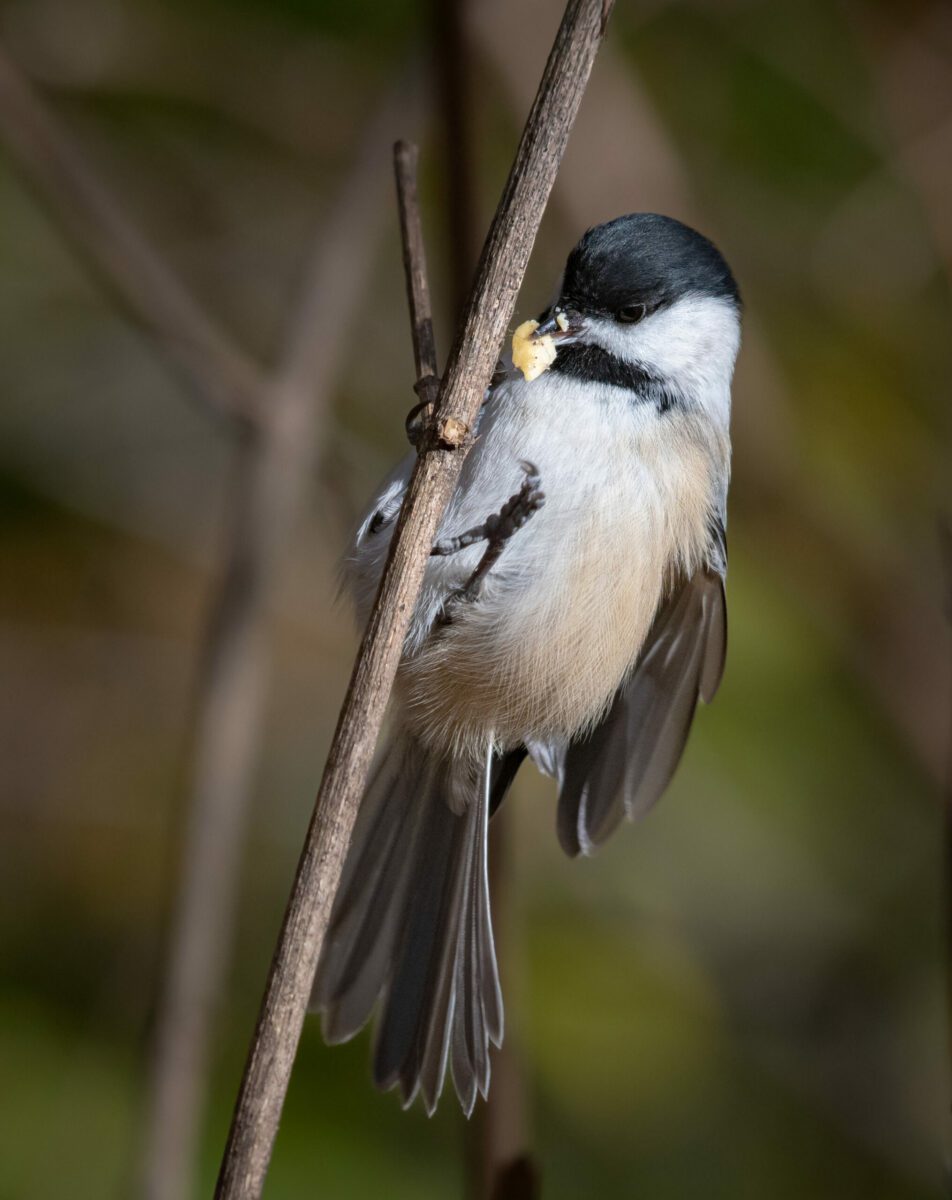
Photo credit: Dmitriy Aronov, PhD
Every Kid Outdoors funds Project FeederWatch
at Black Rock Forest
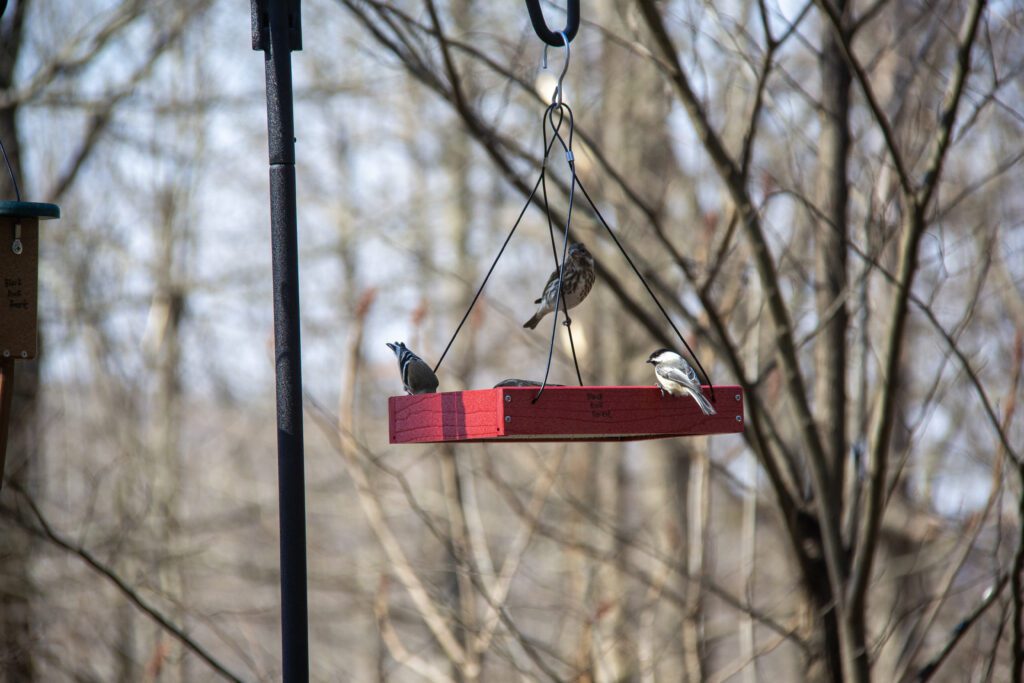
In partnership with the USDA Forest Service, the National Park Trust awarded an Every Kid Outdoors Small Grant to Black Rock Forest at the start of 2024. Our winter programming historically includes snow tracking and aquatic life beneath the ice, but the recent climate has reduced the amount of snowfall and subfreezing temperatures needed for these lessons. Instead, we decided to use this small grant to join Project FeederWatch, install new feeders, and expand our winter curriculum offerings.

So far, 190 elementary school students from nine different classes have visited the Forest to learn how to identify common feeder birds, understand how the weather affects their behavior, and record their observation data. When we have two classes, they are able to observe different feeders from both the Forest Lodge and the Moretti Education Center simultaneously. Project FeederWatch runs until the end of April, so we look forward to fostering future outdoor stewards on upcoming class trips!
Nature learning can and should happen in all seasons. Winter bird feeding has been a great way to engage our students (and adults!) by providing them with memorable experiences here in the Forest, as well as helping boost our local flocks. This gives students an opportunity for hands-on learning and a way to feel like scientists by helping to contribute to data that’s used to monitor our bird populations across the United States. We love being part of Project FeederWatch and hope to continue monitoring in the years to come.
So far, we have recorded the following species: black-capped chickadee, tufted titmouse, white-breasted nuthatch, dark-eyed junco, downy woodpecker, mourning dove, American goldfinch, cedar waxwing, house finch, purple finch, Northern flicker, Northern cardinal, American crow, red-winged blackbird, American robin, common grackle, and Carolina wren.
– Jessica Schnell, PhD, Director of Education, Black Rock Forest
Evidence of Those Who Came Before – Archeology in Black Rock Forest
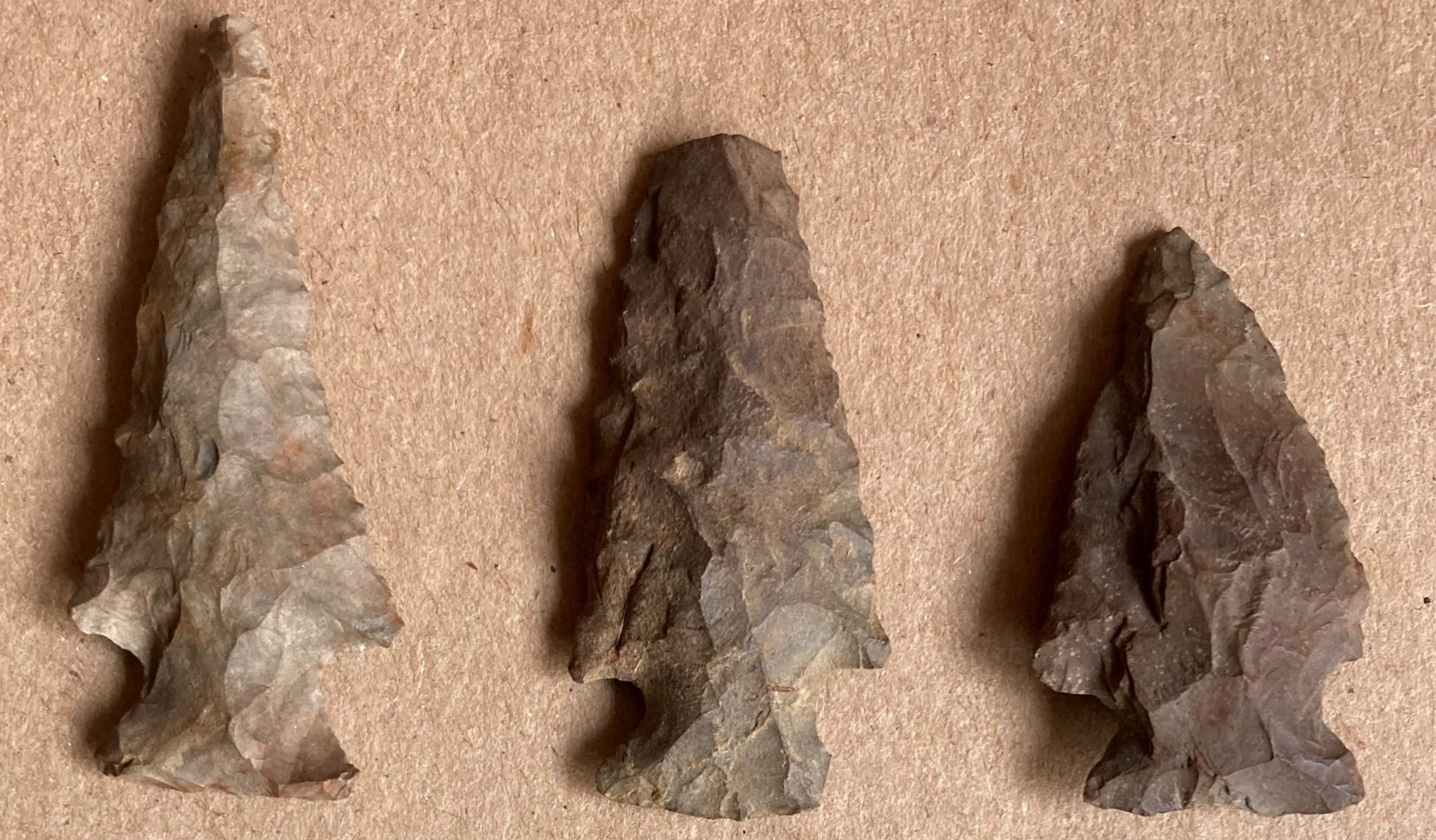
For thousands of years, people travelled through, harvested resources from and made their homes within Black Rock Forest (BRF), yet little evidence of that is visible today. With support from the Peck Stacpoole Foundation, I have begun working with BRF staff on a comprehensive project to research the existing evidence for those earlier occupants.
The initial focus has been on examining artifacts collected by Forest Historian John Brady and those generously donated by Ken Babcock. The artifacts have been collected over the past decades and were sitting in cabinets, on desks, and on bookshelves and had never been fully organized or catalogued. With the help of dedicated volunteers, particularly Andrew Ferguson and Joanne Tavino, we have meticulously curated artifacts recovered from 24 historic sites and one prehistoric site within BRF. Curating includes washing, labeling or bagging, and identifying each item. Measurements and photographs are taken, and all are recorded in computer tables and files. To date, we have tabulated 859 artifacts from the 24 sites. There are an additional 4567 artifacts from the Bearmore Site, most of which we found through archeological testing and fully recorded through earlier volunteer labor.
Since context is vital to interpreting any archeological site, our team has revisited every historic site from which a collection of artifacts has been made. Through field notes, photographs and GPS coordinates of artifact locations and cultural features, we have begun creating a permanent and coherent record of the archeological sites in the Forest. I have also worked to train staff and volunteers to understand the critical importance of leaving artifacts where they are found! Leaving artifacts where they are and keeping sites intact will allow archaeologists to better study the past and learn the stories of BRF.
Although historic sites may be precisely dated, the BRF collections are generally too limited in character to reliably interpret them. Some, however, are very intriguing even with the limited number of artifacts. One site, for instance, was understood to have been occupied during the late 19th century, yet the diagnostic ceramic artifacts clearly date to the late eighteenth and early nineteenth centuries – one of the two earliest historic known historic home sites in BRF.
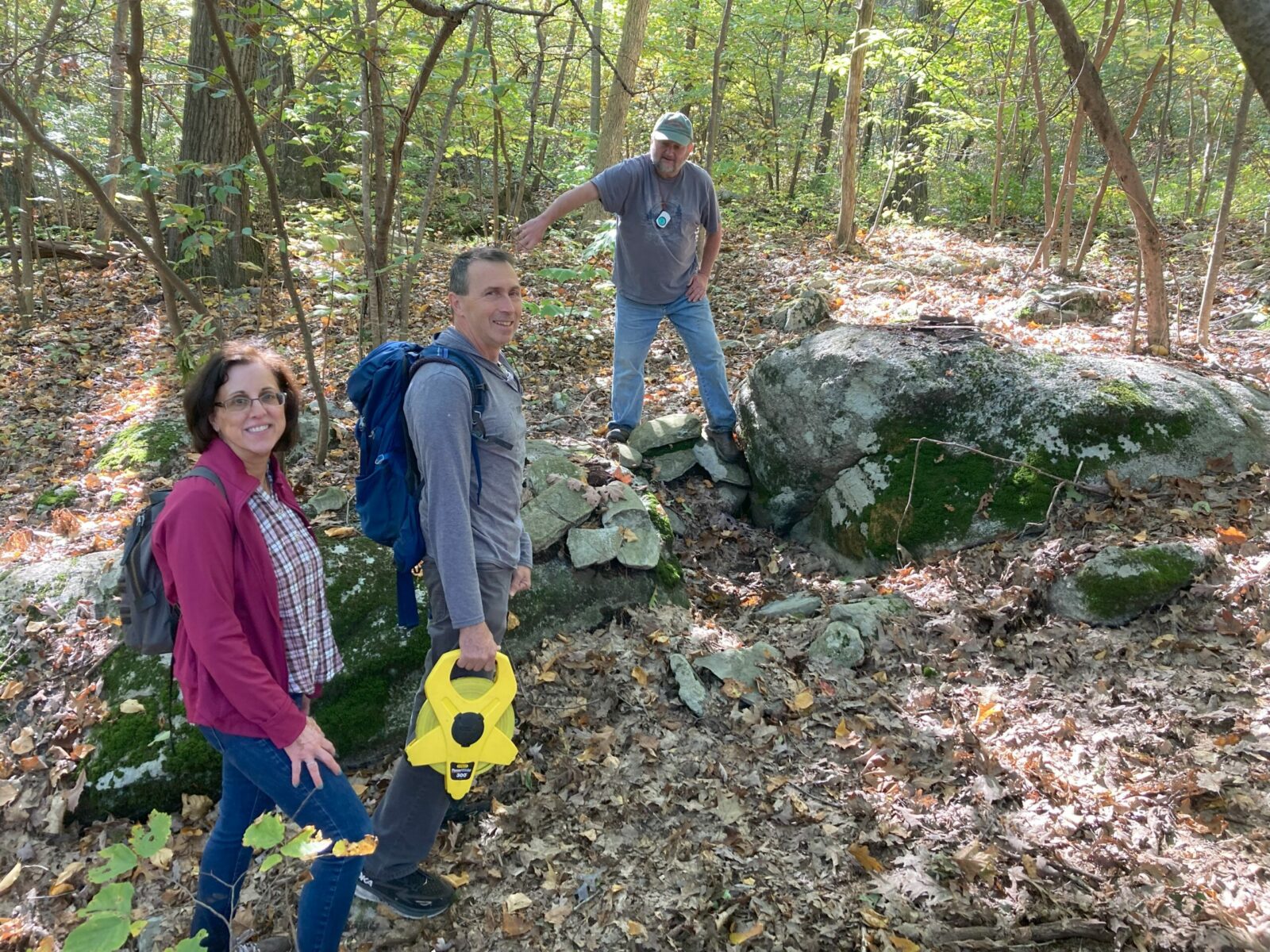
Most of the sites we documented are historic rather than prehistoric. However, this is expected when artifacts were found through metal detection. Our few diagnostic prehistoric artifacts from these collections indicate Native American predecessors were here as early as 5000 years ago and appear never to have left until the colonial era.
As this project nears completion, additional avenues of study become more clearly defined. Key among them are archival research into family deeds, probate, and local industry to learn more about the families who lived here. Future research and selective professional archeological work will fill out our records of prehistoric sites. Professional archaeological investigations will also help us paint a fuller picture of Black Rock Forest’s rich history.
–Dana Linck, Archeologist, Great Chain Archeological Consulting
Birdhouses: Providing Homes in Black Rock Forest

As you hike through Black Rock Forest, you may come upon wooden nest boxes installed in our wetlands for ducks and in open meadows for bluebirds. For several decades, we have worked to provide more nesting habitat for birds in Black Rock Forest by installing nest boxes. Our goal is to attract a diversity of native bird species, limit predation from rodents, and reduce competition from other bird species. There are also nesting boxes set up for specific research purposes, like studying chickadees (see Dmitriy Aronov’s article in this issue “Chickadees & Memory: Research at Black Rock Forest”).
The design of the box varies depending on which bird species we are trying to attract, but most have a narrow entrance to limit predators from entering. They are usually installed away from trees to minimize rodent traffic. The construction of the nesting boxes has been an in-house process using lumber produced from within the Forest (except when specialized boxes are required for research projects). Staff, volunteers, researchers, and school groups have helped with the installation and maintenance over the years. All the work seems to be worth it, as Eastern bluebirds and wood ducks have already occupied boxes this spring.
We encourage you to consider putting a nesting box in your own backyard! Building (or buying), installing, and caring for a nesting box can be a very rewarding experience. It is a simple way to support bird diversity and watching a new bird family is a great way to engage with the natural world.
–Matthew Brady, Forest Director, Black Rock Forest
The Forest in Brief
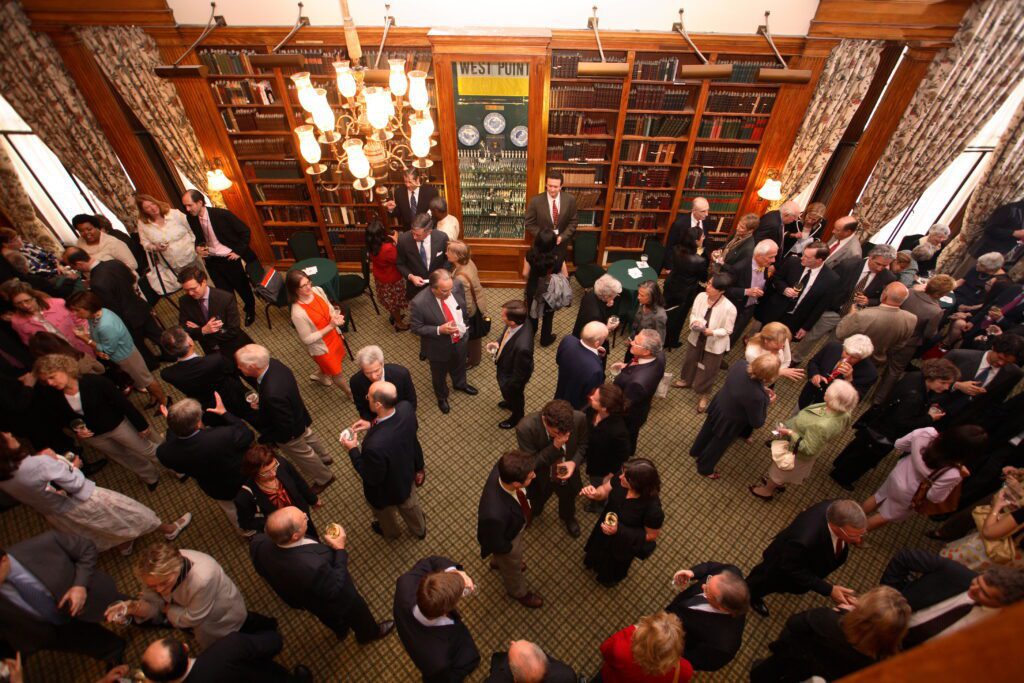
Benefit Co-Chairs, Lotus Do and Andrew Jacobs invite you to join them at the Black Rock Forest Benefit Luncheon to be held on May 22 in New York City! We are pleased to honor David and Jeannette Redden with the Dr. Ernest G. Stillman Award and the event will feature a Keynote Presentation by the David Redden Conservation Science Small Grants Program Awardees.

We’re just a few weeks away from Black Rock Forest’s Earth Day Weekend. Join us for conservation, clean-up, and planting opportunities – help make a difference in and around our Forest!
4/21 – Black Rock Forest Spring Spruce-Up: Cornwall Clean-Up Crew
4/22 – Earth Day Stewardship: A Day of Action at Black Rock Forest
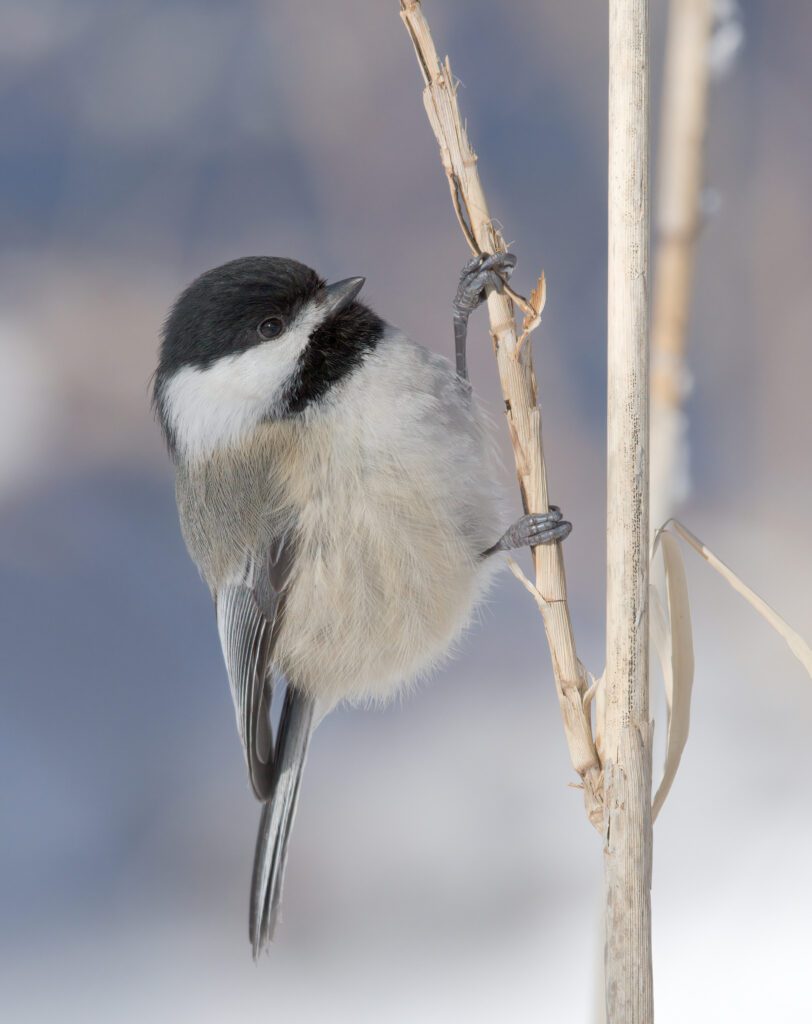
A third Spring Migration Bird Walk will be held on May 13, 8 – 11am! This walk will be led by Dmitriy Aronov and Stephanie M. Hale of Columbia University, who have been researching bird behavior and biology at Black Rock Forest.
Black Rock Forest Digital Calendar Wallpaper
Check out our digital wallpaper with calendar months May, June, July and August now available for download. Featuring images submitted by photographers Scott Sobel, Irene Sheldon, Angelica Patterson (former BRF Education Director) and Kevin Dumont of Black Rock Forest. Thank you to our volunteer photographers!!!
Calling all Black Rock Forest photographers! We are looking for high resolution photos taken throughout the year of Black Rock Forest. If you would like to have your Black Rock Forest photo considered for a future digital wallpaper featured in our seasonal newsletter CLICK HERE.
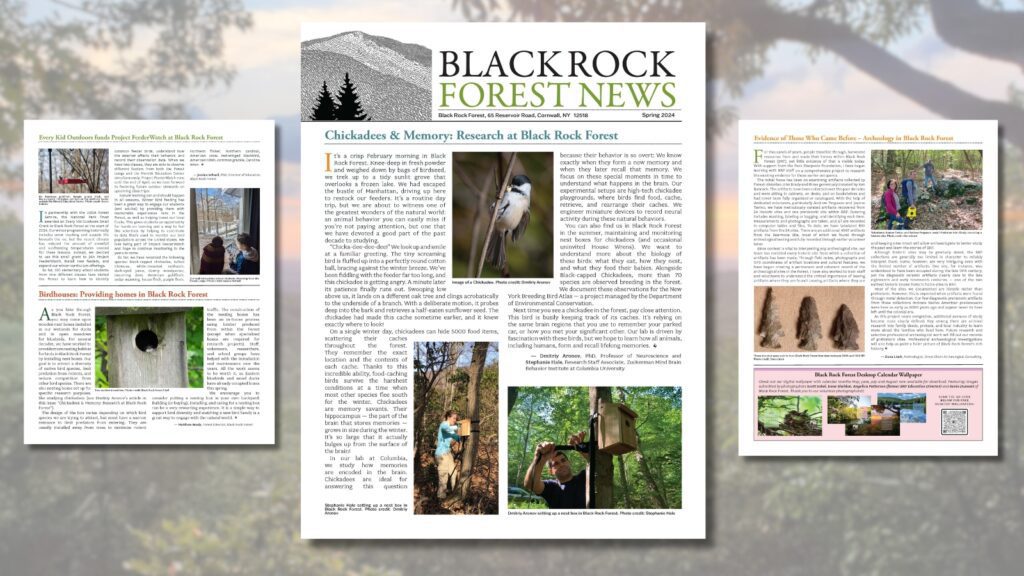
If you would like to download a copy of this Spring 2024 newsletter CLICK HERE.


